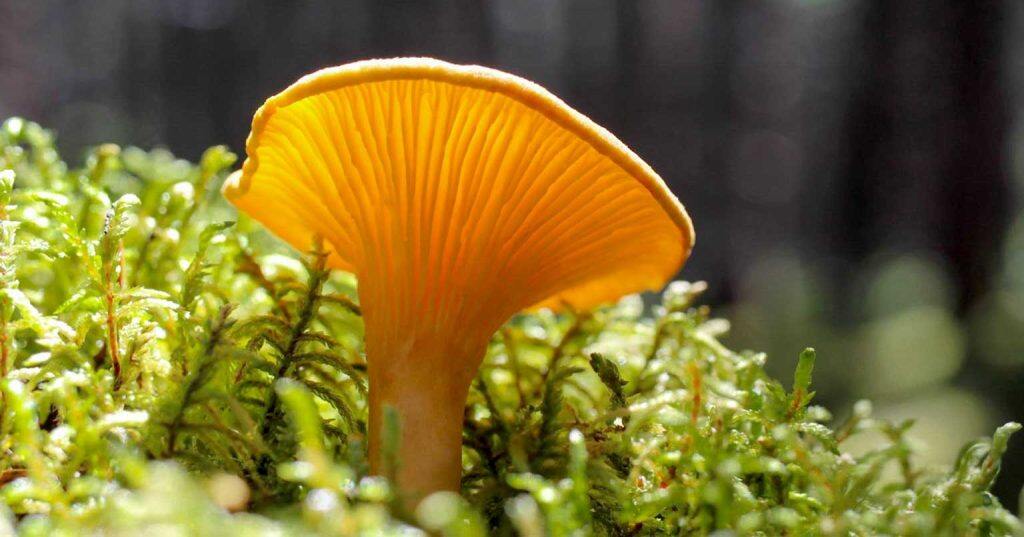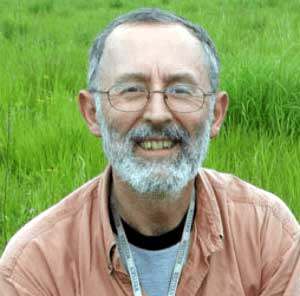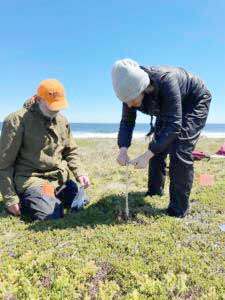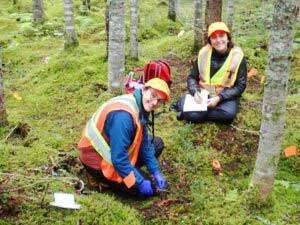

A team of Western mycologists (fungi experts) spent the past two summers digging deep in Newfoundland dirt to investigate the might of mushrooms and found what lies beneath truly is ‘the main character’ in most terrestrial ecosystems.
Fungi, which produce mushrooms, are critically important in most earthbound ecosystems as they provide life-sustaining mineral nutrients to plants while decomposing their remains, and recycling both organic and inorganic byproducts throughout the biome as they grow and reproduce.


“A lot of ecologists are beginning to realize that mushrooms really run the world. We’ve quite naturally spent a lot of our time focusing on things above ground, things that we see like plants, animals, and birds,” said Western biology professor Greg Thorn. “But in fact, the plants are very closely associated with fungi, and basically wouldn’t be there (above ground) without them.”
Fungi make nutrients available to plants either through decomposition and nutrient cycling, or by directly transporting nutrients to the plants, or in some cases, both processes occur.
“Diversity and composition of the fungal community in a place really dictates what happens there ecologically both in terms of plant composition and productivity,” said Thorn. “If the plants are growing more, then there’s more for animals to eat. So really, a whole lot of things that we actually care about start off in the ground with the fungi driving those things.”
Nature’s vacuum cleaner
Katarina Kukolj, a master’s student in the Thorn lab, leads a study investigating the effects of the edible blewit mushroom (Lepista nuda) on the soil environments in coastal regions of Newfoundland, specifically in the community of Lumsden.


Building on Thorn’s research, Kukolj wants to know how and why blewits basically ‘attack’ microfauna (microscopic animals and organisms) living in the soil and serving as nature’s vacuum cleaner by eating bacteria, decomposing surplus nutrients, and producing new ones.
Previous studies on blewits have shown their antimicrobial properties and powers in the lab, but there have been no previous field studies to observe how soil and the organisms in it could be changed by growth of blewit mushrooms in the natural environment.


Greg Thorn and Katarina Kukolj conducting field work in Newfoundland in 2021. Photo credit: Katarina Kukolj
Kukolj’s field study included sampling soil at various time points from known naturally occurring blewit patches (known as fairy rings), nearby plots of land inoculated with Blewit mycelium (root-like structure of a fungus) produced by industry partner Nuspora Life Sciences Inc., and geographic areas without blewits altogether.
With the discovery phase of her research still underway, Kukolj doesn’t have all the answers to her questions just yet, but one thing’s for sure: these mushrooms are huge.
“The blewit mushrooms we’re studying are just so big, and so heavy,” said Kukolj. “This is surprising because they grow in harsh conditions that seem to be nutrient poor where there is little soil and mostly coarse sand and peat. As a result, we’re thinking that the Blewits are consuming bacteria and maybe even other organisms. So, the question is: What’s in the soil? And that’s exactly what I’m studying.”
Now back in the lab, Kukolj is classifying arthropod (insects, arachnids, and crustaceans), nematode (non-segmented worms, typically 0.05 millimeters in length), bacterial, and fungal members in the specific soil communities and distinguishing their relative abundance using DNA extraction, identification, and sequencing.


Kukolj believes her research could also provide important supporting data for the use of blewits as a biopesticide in organic farming. Blewitt mushrooms would be an environmentally friendly alternative to some synthetic chemical pesticides. They’re also non-toxic and there would be no leaching into the waterways.
“I’ve always had an interest in nature and fungi, and in helping the environment. Agriculture is really one of those things where we can do better, in terms of reducing the toxic pesticides being used. It’s just so damaging,” said Kukolj. “It would be amazing if the Blewit could replace one of these toxic pesticides, especially with organic farming becoming more popular, since people are becoming aware of the damaging effects of some pesticides on the environment.”
As an edible mushroom that is commonly foraged, Kukolj suggests blewits could also be a potential co-crop for farmers in addition to being a biopesticide, but future studies would need to investigate this further.
Root of the matter
Alicia Banwell, also a master’s student in the Thorn lab, is focused on forestry regeneration and the role fungi plays in replenishing Canada’s forests.


When a forest, like the one Banwell studies in Gander Bay, Newfoundland, is deforested, often nursery-grown tree seedlings are planted at the deforested site to replace the forest for the next generation.
While these seedlings are growing in the nursery during the first few years of their life, they develop a fuzzy mat of fungi connected to their roots, called ectomycorrhizal fungi.
The forest also develops its own fuzzy mat of ectomycorrhizal fungi, which can be seen by pulling up the top layer of moss and soil. These fungi form an underground network in the forest, which allows trees connected within network to transfer resources such as carbon, nitrogen, and other important nutrients among each other, in addition to producing many edible mushrooms, such as chanterelles.


For her study, Banwell sampled roots of naturally occurring trees found in the forest and the seedlings she planted there, typical of the local forest industry. Only a few mushrooms colonize the nurseries, but in the forest, there is a diverse network of mushrooms, such as the chantarelle mushroom (Cantharellus enelensis), and trees working together to regenerate Newfoundland’s forests. Again, this is despite the poor soil.
“There are fungal spores everywhere. Every tree seedling in the nursery has the same few fungi colonizing their root systems,” said Banwell. “I want to know how it works when these are introduced into natural spaces. Do the ectomycorrhizal fungi of the nursery-grown tree seedlings affect the ectomycorrhizal fungi that are in the forest, including the edible chanterelles? Do they replace the ectomycorrhizal fungi of the forest? Or do the ectomycorrhizal fungi of the forest replace them?”
There is not enough data yet to report any findings, but the answers to these questions will tell Banwell what is happening to the ectomycorrhizal fungi of the forest after reforestation, and potentially lead to further research on how reforestation practices can be improved to preserve fungal biodiversity.
The future is fungi
As Kukolj and Banwell complete their studies under Thorn’s supervision, the future is bright for the budding mycologists. Like fungi itself, Thorn said fungal biotechnology is an ever-growing industry as new uses for mushrooms, like blewits and chantarelles, are being discovered and developed every day.
“People are using mushrooms for all kinds of things that hadn’t been thought of before. Mushrooms are being used to create Styrofoam alternatives, meat substitutes for vegan foods, and even new medicines. There are all kinds of novel antibiotics being developed from mushrooms. It’s amazing and it’s an exciting time to be studying mushrooms.”








































